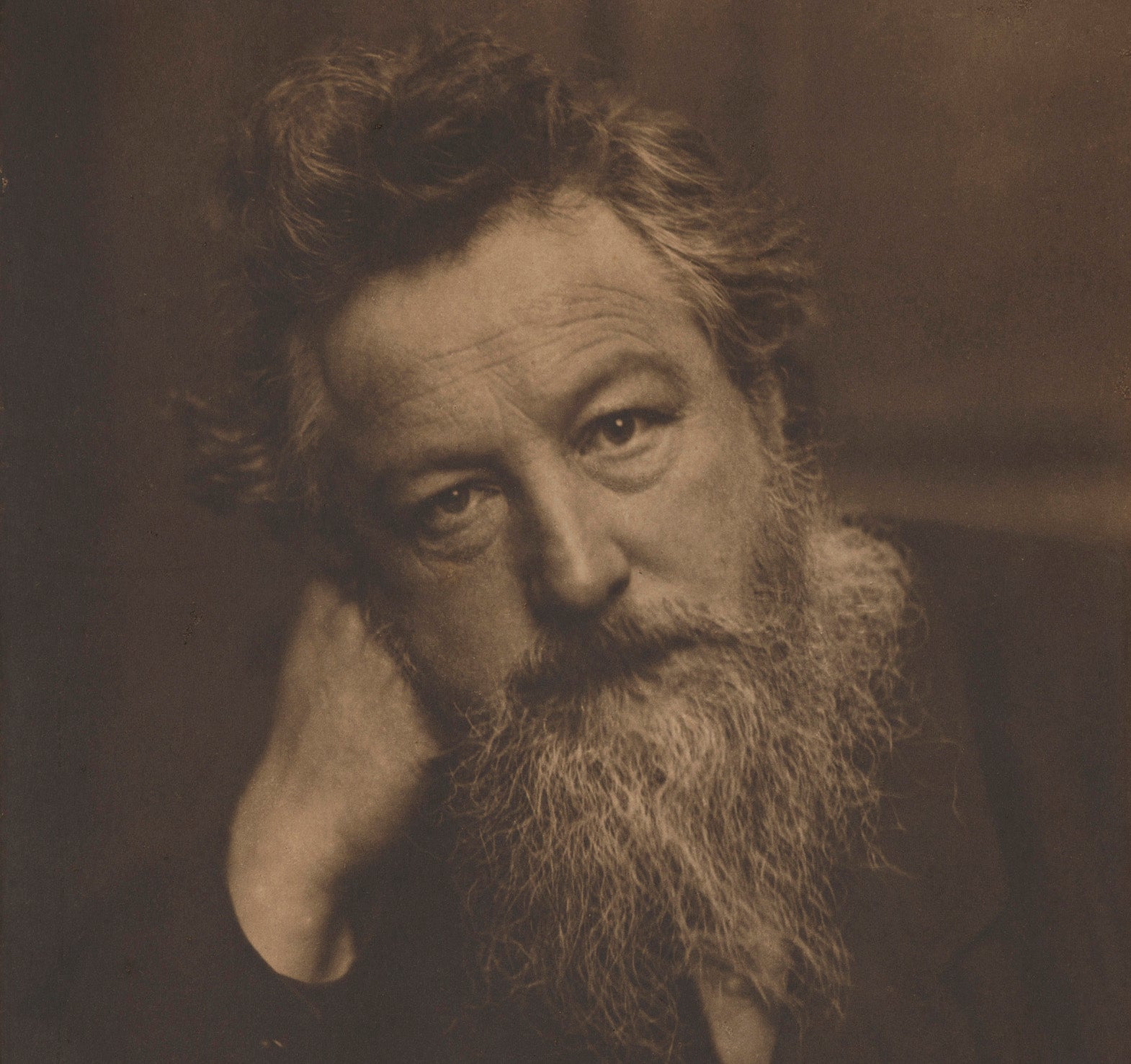William Morris at the National Portrait Gallery: The radical who shaped our aesthetic
From the Pre-Raphaelites to Terence Conran, new exhibition charts the influence of Morris' design and politics on the 20th century

“History has remembered the kings and warriors, because they destroyed; art has remembered the people, because they created,” wrote William Morris,one of the 20th century’s most important creators.
Tomorrow an exhibition devoted to Morris’ influence on modern life - both aesthetically, practically and politically - opens at the National Portrait Gallery.
From his ubiquitous nature-inspired textile and wallpaper designs, to his friendship with the Pre-Raphaelites, his remarkable paintings, jewellery and furniture designs, not to mention the numerous books he wrote and published via his own Kelmscott Press, Morris, who died in 1896 aged 62, seems to have packed more into each of the years he lived than most of us manage in a lifetime.
Anarchy & Beauty: William Morris and his Legacy at the National Portrait Gallery
Show all 10He, along with John Ruskin, was a leader of the arts and crafts movement which inspired a revival in traditional British textiles and an early exponent of socialist ideas. He initiated an “art for the people” movement and set out to “remake the world” with the help of his friends in the Pre-Raphaelite Brotherhood such as Edward Burne-Jones.
Morris believed you should have nothing in your house that you do not know to be useful, or believe to be beautiful. Thus the exhibition at the National Portrait Gallery includes a host of unusually well-crafted practical objects such as an erotic garden roller designed by Eric Gill and the sandals belonging to one of his protégés, Edward Carpenter, which are said to have inspired the much-mocked sandal-wearing craze among left-wing intellectuals.
The exhibition, which runs until 11 January, is curated by Morris’ biographer Fiona MacCarthy. It displays the work of Arts and Crafts practitioners inspired by Morris and ‘simple life’ philosophers such as Carpenter and Gill, also showing how Morris’s radical ideals developed through to the Garden City movement and from the Festival of Britain onwards to young post-war designers such as Terence Conran who took up Morris’s original campaign for making good design available to everyone.
Key exhibits include William Morris’s own handwritten Socialist Diary from the British Library, his gold-tooled handbound copy of Karl Marx’s Le Capital, lent from the Wormsley Library and Burne-Jones’s spectacular handpainted Prioresses Tale wardrobe coming from the Ashmolean in Oxford.
"Now in the 21st century our art and design culture is widespread. But its global sophistication brings new anxieties,” said MacCarthy.
"We find ourselves returning to many of Morris's preoccupations with craft skills and the environment, with local sourcing, with vernacular traditions, with art as a vital force within society, binding together people of varying backgrounds and nationalities.
"This exhibition, as I see it, will not only explore what William Morris's vision was but will suggest ways in which his radical thinking still affects the way we live our lives."
Subscribe to Independent Premium to bookmark this article
Want to bookmark your favourite articles and stories to read or reference later? Start your Independent Premium subscription today.

Join our commenting forum
Join thought-provoking conversations, follow other Independent readers and see their replies